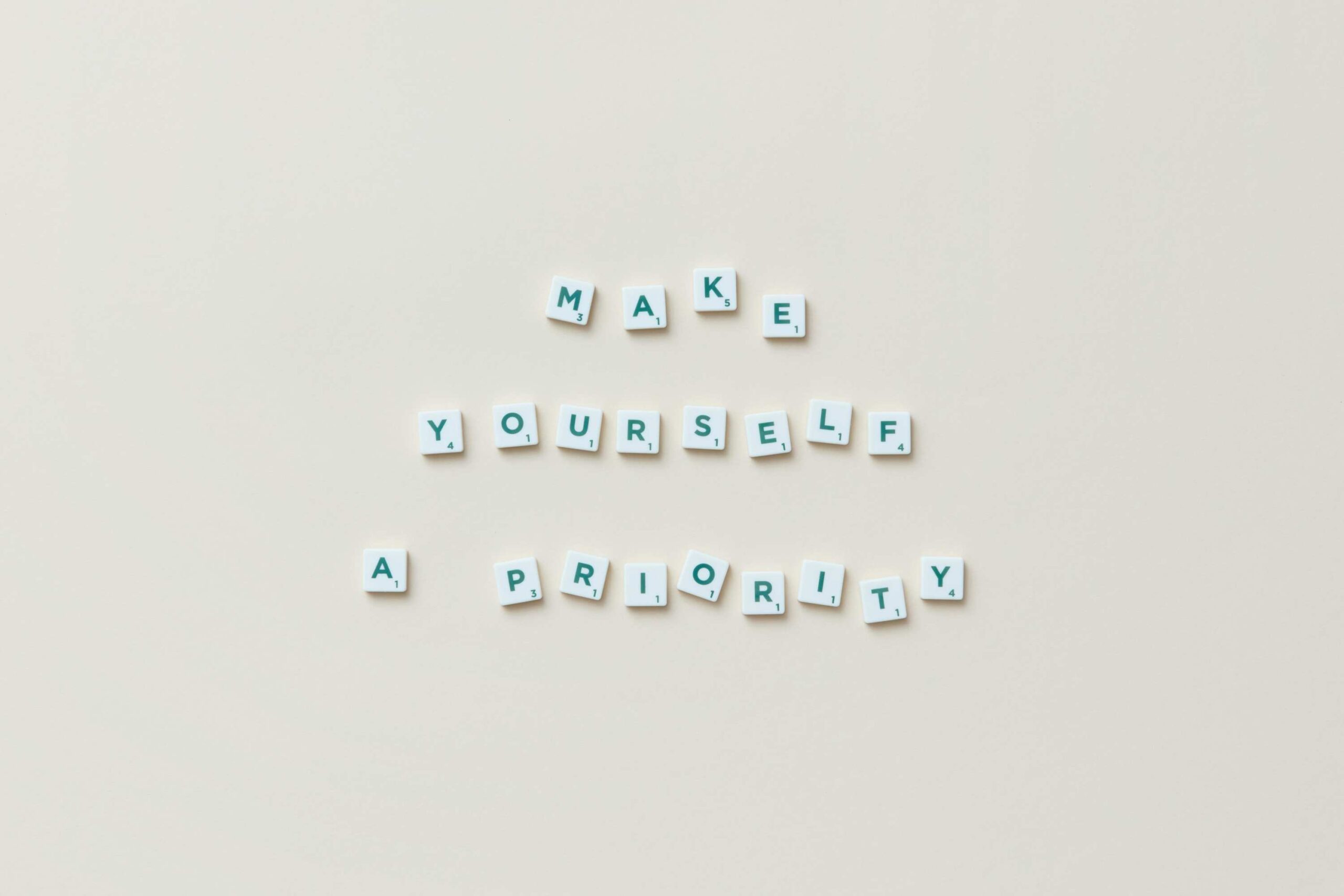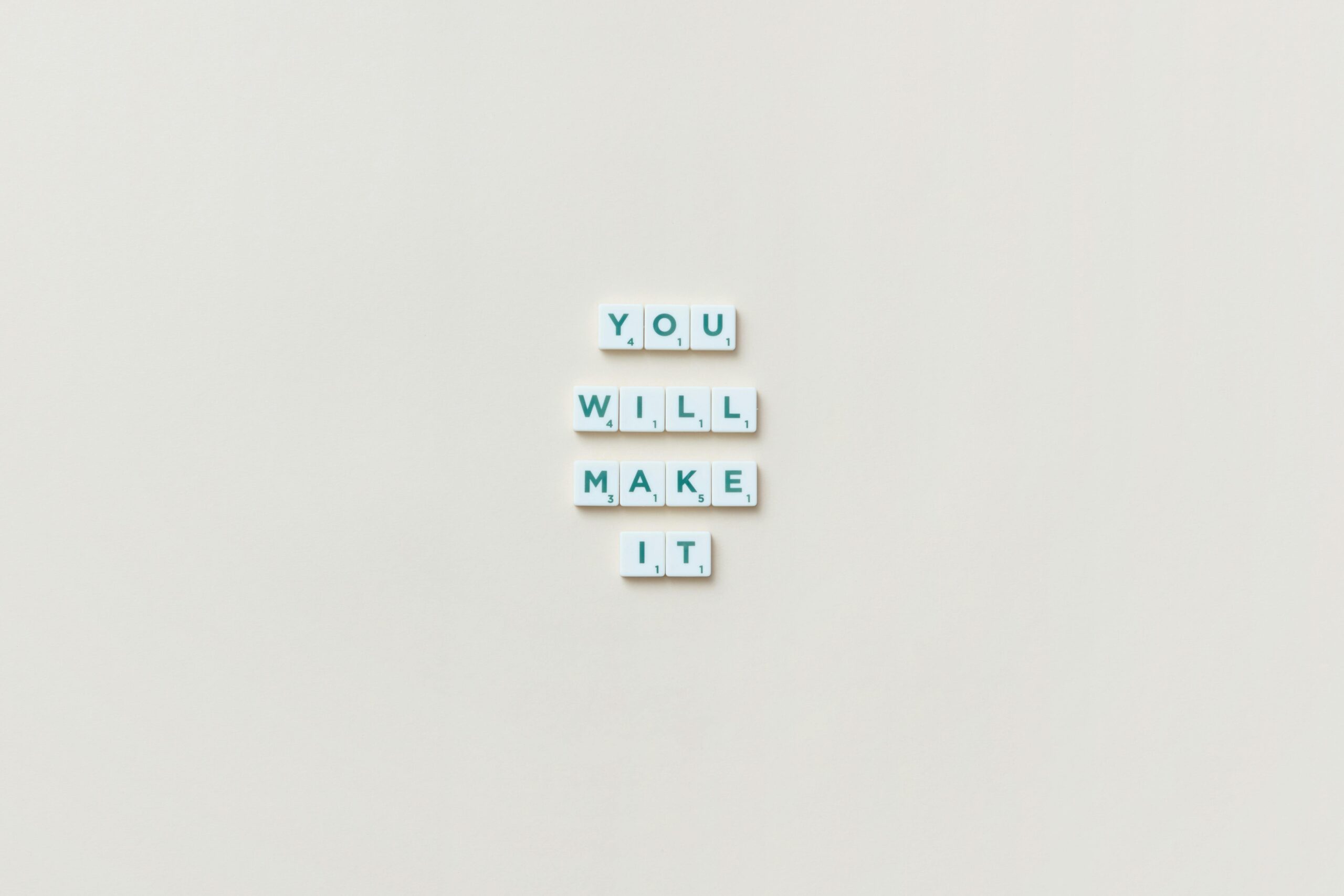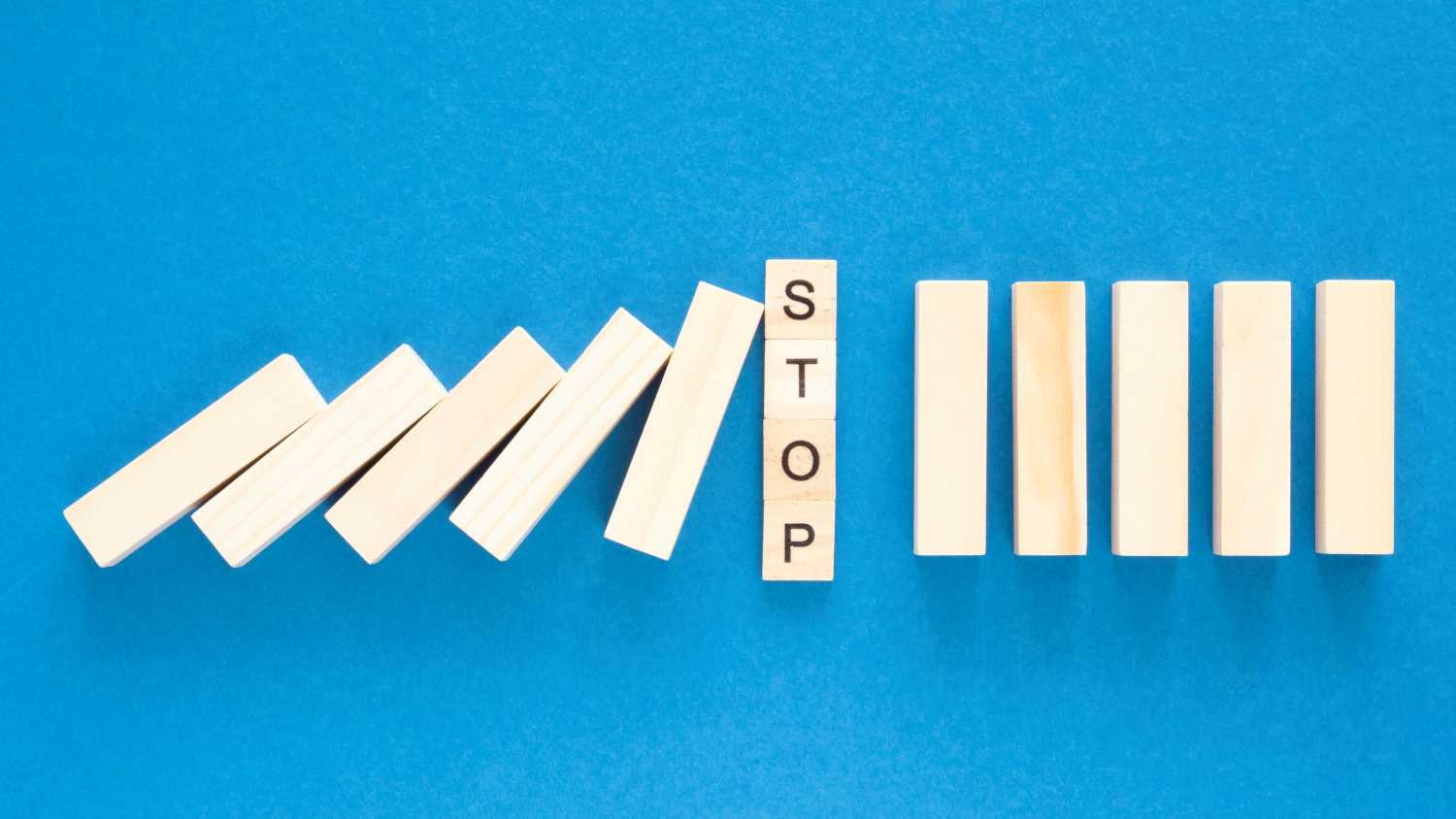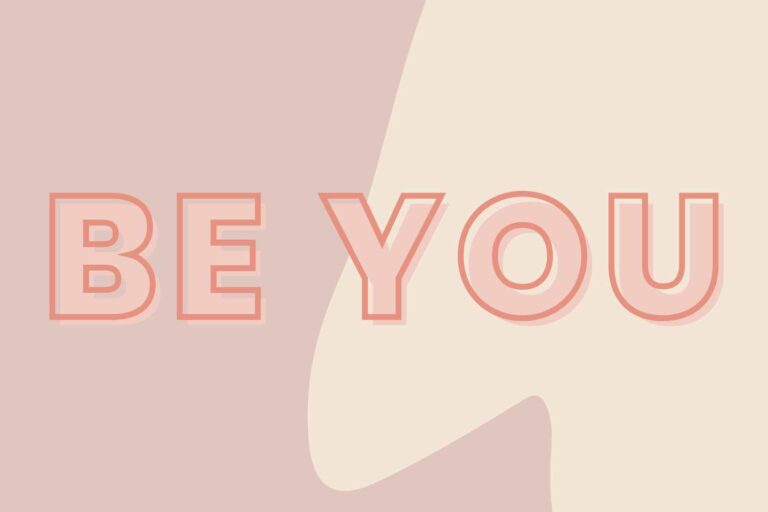How to set boundaries: 7 days of practice to say ‘no’ without guilt
You know you need to set boundaries. You’ve read the articles, saved the Instagram posts, told yourself “next time I’ll say no.”
But when the moment comes? You give in. You say yes. You overextend yourself again. And then you spend the rest of the day – or week – resenting it.
But here’s the truth – reading about how to set boundaries doesn’t create them. Action does.
That’s why I created this 7-day boundary practice. Not to teach you theory, but to give you real, doable challenges that build your confidence one “no” at a time.
By the end of these seven days, you won’t just understand boundaries – you’ll practice them in real life. You’ll have proof that you can set limits without the world falling apart.
Ready? Let’s start small and build from there.
Day 1: Catch yourself in the act
Today’s mission: Notice every time you say yes when you mean no.
You can’t change what you don’t see. And most people have no idea how often they abandon themselves just to keep the peace.
Here’s what to do: Carry a small notebook or use your phone. Every single time today that you:
- Say yes to something you don’t want to do,
- Agree to plans that drain you,
- Take on something that isn’t your responsibility,
- Stay in a conversation longer than you want to…
Write it down. Don’t judge it. Don’t try to fix it yet. Just notice.
By the end of the day, answer these questions:
- How many times did I say yes when I meant no?
- What pattern do I see? (Same person? Same type of request? Same fear?)
- What did it cost me? (Time? Energy? Peace?)
If you’re noticing the same pattern over and over, it might help to get clear on what you actually value most in life. Sometimes we say yes to everything because we’ve never really decided what matters enough to protect.
Why this matters:
You’ve been operating on autopilot. Today, you interrupt that pattern by simply paying attention. That’s where all change starts – with awareness.
The uncomfortable truth: If you saw yourself saying yes five, ten, fifteen times today when you didn’t want to… that’s how often you’re betraying yourself. Daily.
Tomorrow, we start changing it.

Day 2: Practice the pause
Today’s mission: Before saying yes to anything, pause for 10 seconds.
Most people say yes instantly. It’s automatic. You don’t even think about whether you want to – you just respond.
Today, you break that pattern. You learn to set boundaries starting with the pause – the moment between the request and your automatic yes.
Here’s what to do: Every time someone asks you for something – your time, energy, help, attention – don’t answer immediately.
Instead:
- Take a breath
- Count to 10 in your head
- Check in with yourself: “Do I actually want to do this?”
- Then respond
If the answer is no but you’re not ready to say it yet, use one of these:
- “Let me check my schedule and get back to you.”
- “I need to think about that.”
- “Can I let you know tomorrow?”
Why this matters:
That 10-second pause creates space between the request and your response. Space where you can actually hear what YOU want instead of just reacting out of habit or guilt.
What you’ll notice: The pause feels awkward at first. You might worry the person will think you’re rude or hesitant. They won’t. And even if they do, your peace matters more than their comfort with your instant availability.
By the end of today, ask yourself:
- How many times did I pause before responding?
- Did pausing change my answer in any situation?
- What did I notice about my automatic “yes” instinct?
You’re building the muscle of choice. That’s what confident boundaries look like – choosing your response instead of defaulting to yes.
Day 3: Set boundaries by saying no to something small
Today’s mission: Say no to one thing that normally you’d say yes to.
You’ve been noticing. You’ve been pausing. Now it’s time to actually set a boundary. Start small. This doesn’t have to be dramatic. Just one clear, simple no.
Examples:
- Someone asks you to cover their shift – say no.
- A friend wants to vent for an hour – say you only have 10 minutes.
- Your family expects you at an event you don’t want to attend – decline.
- A coworker asks you to take on extra work – pass.
- Someone texts asking for a favor – say you’re not available.
How to say it:
Keep it simple. Don’t over-explain. Try one of these:
- “That doesn’t work for me.”
- “I’m not available for that.”
- “I can’t take that on right now.”
- “No, but thanks for thinking of me.”
Then – and this is crucial – stop talking.
Don’t justify. Don’t apologize. Don’t give them a 10-minute explanation of why you’re busy. Just state your no and let it be. If you need help with saying no when trying to set boundaries have a look at our Mastering the art of saying no article.
What will probably happen:
Best case: They say “okay” and move on. (This happens more than you think.)
Likely case: You feel guilty. Your chest tightens. You question if you should’ve just said yes. That’s normal. Sit with it. The guilt will pass. The resentment from saying yes wouldn’t have.
Worst case: They push back. They ask why. They try to guilt-trip you. This is where you practice holding your ground: “I understand you’re disappointed, but my answer is still no.”
End of day reflection:
- What did I say no to today?
- How did it feel in the moment?
- How do I feel now, hours later?
- Did saying no actually cause the catastrophe I imagined?
You just proved to yourself that you can say no and survive. That’s huge. Don’t minimize it.

Day 4: Identify your guilt triggers
Today’s mission: Figure out exactly what makes you give in on boundaries.
You know that feeling when someone asks for something and immediately, before you even think about it, guilt floods in?
That’s not random. You have specific guilt triggers – people, situations, or dynamics that make you feel like saying no is wrong.
Today, we identify them.
Here’s what to do: Think back over the past week. When did you feel the most guilt? Was it when you tried to set a boundary and someone pushed back? Or when you didn’t set a boundary and spent days resenting it?
Answer these questions:
- Who makes me feel the most guilt when I consider saying no? (Parent? Partner? Friend? Boss? Specific person or type of person?)
- What type of requests trigger instant guilt? (Emotional support? Time? Money? Help with tasks?)
- What am I afraid will happen if I say no to this person? (They’ll be mad? They’ll reject me? They’ll think I’m selfish? They’ll stop loving me?)
- Where did I learn that saying no to this type of person/request was wrong? (Childhood? Past relationship? Cultural messaging?)
Why this matters: You can’t dismantle guilt if you don’t understand where it’s coming from. Once you see the pattern – “I always feel guilty saying no to my mom” or “I can’t say no to anyone who’s upset” – you can start challenging it.
The truth you need to hear:
That guilt isn’t proof you’re doing something wrong. It’s proof you’re breaking an old pattern. Your brain is trying to pull you back to what’s familiar (people-pleasing) because that’s what kept you “safe” before.
But safe doesn’t mean healthy. And guilt doesn’t mean you should change your boundary.
By the end of today:
Write down your top 3 guilt triggers. These are the boundaries you’ll practice the most in the coming days.
If your guilt triggers involve specific people, you now know where your boundaries need to be strongest. And where you’ll need the most support to hold them.
How to work with the guilt when it shows up:
Guilt is just a feeling, not a fact. When it hits, try one of these self-compassion practices:
- Place your hand on your heart and say “This is hard, and I’m doing my best.”
- Remind yourself “I can feel guilty and still hold my boundary.”
- Ask “What would I tell a friend who felt this way?”
The guilt doesn’t mean you’re doing something wrong. It means you’re doing something new.
Day 5: Hold a boundary when someone pushes back
Today’s mission: Set a boundary and hold it when someone questions it.
This is where most people fail. They set a boundary, someone pushes back, and they immediately give in.
Not today.
Today, you practice standing firm even when someone doesn’t like your no.
Here’s what to do: Set a boundary with someone today – ideally with someone you identified as a guilt trigger yesterday.
Then, when they push back (and they probably will), don’t negotiate.
Common pushback and how to respond:
“Why not?” Your response: “Because it doesn’t work for me.”
“But you always do this for me.” Your response: “I know. That’s changing.”
“Come on, it’ll only take a minute.” Your response: “I’m still not available.”
“Are you mad at me?” Your response: “No, I’m just setting a boundary.”
“You’re being selfish.” Your response: “I understand you see it that way. My answer is still no.”
The key:
Don’t defend. Don’t justify. Don’t re-explain your reasoning. You already said no. That’s enough. If they keep pushing, repeat yourself once: “Like I said, that doesn’t work for me.”
Then – if they still won’t drop it – end the conversation. “I need to go. We can talk later when you’re ready to respect my decision.”
What you’ll feel: Uncomfortable. Maybe guilty. Possibly like you’re being “mean.” You’re not. You’re being clear.
Here’s what’s actually happening: They’re uncomfortable with your boundary, and they’re trying to make it your problem. Don’t take it on.
Their discomfort with your boundary is not your responsibility to fix.
End of day reflection:
- Who pushed back on my boundary today?
- How did I respond?
- Did I hold my ground or did I give in?
- If I gave in, what made me do that?
- How do I feel now about how I handled it?
Be honest. If you gave in, that’s okay. You’re learning. Tomorrow, you’ll try again.
But if you held your boundary even when it was uncomfortable? Celebrate that. You just did something most people never do.
Day 6: Practice a boundary without explanation
Today’s mission: Say no to something without giving a reason.
You’ve been setting boundaries. You’ve been holding them when tested. Now we’re going to make them even cleaner.
Today, you set a boundary and you don’t explain why.
Here’s the challenge: Most people can’t say no without a five-minute explanation of why they’re unavailable, what else they have going on, and a sincere apology for being such an inconvenience.
Stop doing that.
When someone asks you for something today and your answer is no, try one of these:
- “I’m not available.”
- “That doesn’t work for me.”
- “I can’t take that on.”
- “No, but I appreciate you thinking of me.”
Then stop talking.
No “because I have this thing and then this other thing and I’m just so busy lately.” No “I’m so sorry, I wish I could help but…”
Just: “That doesn’t work for me.”
What will happen: It will feel abrupt. Rude, even. You’ll want to soften it, explain it, make it easier for them to hear.
Don’t.
Here’s why: Every time you over-explain your boundary, you’re suggesting it’s up for debate. You’re inviting them to problem-solve around your no or convince you otherwise.
A clear, unexplained no is final. It’s not rude. It’s honest.
The discomfort is the point: You’re training yourself to trust that your “no” is enough. You don’t need a defense case. You don’t need permission. You just need to decide.
End of day reflection:
- Did I set a boundary without explaining today?
- How did it feel to just let my “no” stand?
- Did the other person accept it, or did they push for an explanation?
- If they pushed, what did I do?
What you’re learning: Confident people don’t apologize for having boundaries. They state them clearly and move on.
That’s who you’re becoming.

Day 7: Reflect on your progress and commit to what’s next
Today’s mission: Look at how far you’ve come and decide what happens next.
You made it. Seven days of real boundary practice.
Today isn’t about setting a new boundary. It’s about noticing what’s changed.
Here’s what to do: Take 20 minutes and journal through these questions:
- What’s the biggest shift I’ve noticed in myself this week? (Maybe you’re less resentful. Maybe you feel more in control. Maybe you’re noticing how often you used to say yes when you meant no.)
- What boundary am I most proud of setting? (Even if it was small. Even if it felt awkward. Even if you stumbled through it.)
- Where did I struggle the most? (Specific person? Specific type of request? The guilt? The pushback?)
- What boundary do I still need to set but haven’t yet? (You know the one. The boundary you’ve been avoiding because it feels too hard, too risky, or too uncomfortable.)
- What would my life look like in 30 days if I kept practicing boundaries daily? (Less resentment? More energy? Healthier relationships? More time for what actually matters?)
The truth about these seven days:
You didn’t just learn about boundaries. You practiced them in real life. You proved to yourself that you can say no. That you can hold a boundary when someone pushes back. That you can protect your energy without guilt swallowing you whole.
But here’s what seven days can’t do:
It can’t reprogram years of people-pleasing. It can’t unpack all the childhood conditioning that taught you your needs don’t matter. It can’t walk you through every boundary scenario you’ll face in the next month.
Seven days gives you a taste. It shows you what’s possible.
But real, lasting boundary confidence? That takes consistent practice.
What happens next: The choice you have to make
You have two options from here.
Option 1: Stop here.
Take what you learned this week and try to apply it on your own. Hope that the momentum keeps going. Hope that the next time someone guilt-trips you, you remember what you learned on day 5.
Some people can do that. Most can’t.
Because here’s what usually happens: Because here’s what usually happens: Life gets busy. The next time you need to set a boundary, you hesitate. Someone pushes back harder than expected and you give in. The guilt comes back. You slip into old patterns. And six months from now, you’re right back where you started – saying yes when you mean no, feeling resentful, wondering why you can’t just stick up for yourself.
Option 2: Go deeper.
Take these seven days and multiply them by 30. Get the full framework. Practice boundaries in every area of your life – with family, friends, work, yourself. Learn how to handle the hard stuff – toxic people, emotional manipulation, guilt that won’t quit, and the relationships that don’t survive your boundaries.
Get the step-by-step challenges, the journal prompts that help you actually process what comes up, and the exact scripts for every boundary situation you’re avoiding.
That’s what the Boundaries and saying no workbook is for.
30 days of guided boundary practice. Not vague advice – real challenges that build on each other. By the end, you’re not just “working on” boundaries. You’re someone who has them. Someone who protects their energy without guilt. Someone who says no clearly, calmly, and confidently.
Each day includes:
- Journal prompts to help you process what comes up,
- A challenge that pushes you just outside your comfort zone,
- Upgrades if you want to go deeper.
This isn’t theory. It’s practice. Real boundaries, real situations, real transformation.
Who this is for:
You, if:
- You’re tired of feeling resentful after saying yes to things you don’t want to do.
- You know you need to set boundaries but freeze when it’s time to actually set one.
- You’re done putting everyone else first and wondering why you’re always exhausted.
- You want to stop feeling guilty for having needs.
- You’re ready to protect your energy like it actually matters.
This is not for you if:
- You’re looking for a quick fix or magic script that makes boundaries easy.
- You’re not willing to sit with discomfort.
- You want to read about boundaries but not actually practice them.
- You’re not ready to lose relationships that only work when you have no limits.
The reality of what happens if you don’t do this work:
A year from now, you’ll still be:
- Saying yes when you mean no,
- Feeling drained by the same people,
- Resenting yourself for not speaking up,
- Wondering why you can’t just set a boundary and stick to it…
Or a year from now, you could be:
- Someone who says no without guilt,
- Someone who protects their time and energy unapologetically,
- Someone who doesn’t abandon themselves to keep others comfortable,
- Someone who trusts themselves to hold a boundary even when it’s hard.
The difference between those two futures? The next 30 days.
Your next step
These seven days showed you that it’s possible to set boundaries. That you can say no. That you can survive the guilt and the pushback.
Now the question is: Are you going to keep going?
If you’re ready to stop just thinking and actually set boundaries, get the Boundaries and saying no workbook.
30 days. Real practice. Real change.
Or keep doing what you’ve been doing and hope it gets easier on its own.
You already know which choice serves you better. The only question is: Which one are you going to make?







